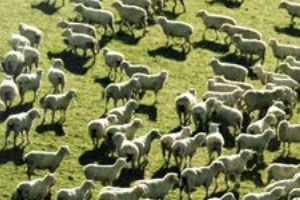
By Allan Barber*
Information obtained from Sydney-based consultancy agInfo shows a very high degree of procurement competition for domestic market supply, especially for beef; this situation has been driven by a tightening of livestock supply combined with aggressive pursuit of retail market share by Woolworths.
It illustrates how the dynamics of the Australian market differ from here, although the structure is quite similar: retail butcheries competing with two major supermarket chains and a larger proportion of stock destined for export.
But the Australian domestic market represents more than 30% of total livestock production compared with only 10-15% in New Zealand where mid-winter is the only time of year when domestic production exerts greater influence.
Australian beef producers are receiving what appears to be an unsustainable price at the moment, measured at 69% of the retail price which compares with 56% in October 2015, 44% in 2014 and 36% in 2013.
This variation appears inexplicable at first sight and can only be explained by a combination of retail competition and shrinking livestock supply. Cross-subsidisation by the supermarket chains is also a factor. This degree of volatility is far greater than we see in New Zealand which producers will either see as a positive or a negative. But it does suggest producers in this country actually receive more accurate market signals.
Added value further processing is a relatively small factor in both countries, but a more significant feature in recent years has been the growth in the bagged lamb trade with the Middle East, up from 900,000 low fat cover lightweight lambs averaging 16kg in 2012 to 3.13 million this year. When the large amount of grass growth this spring is taken into account, lightweight store lambs will be difficult to buy and these are currently selling at a minimum of A$100. This price is expected to drop when numbers increase, but if this happens farmers may well decide to hold onto them and put weight on.
agInfo has also provided some very interesting information on the profitability of Australian red meat companies in 2014 which ranged from 6-9% net profit after tax. In the same year, Alliance posted a NPAT of $6.2 on revenue of $1.46 billion or 0.4%, Silver Fern Farms a result of just above breakeven on sales of $2.3 billion, and ANZCO a profit of $6 million from revenue of $1.25 billion. This performance by the three large meat companies which publish an annual result was a net profit of approximately a quarter of one per cent. At the Australian rate of return for the same year, the cumulative profit should have ranged from $300 -450 million.
Comparisons are odious of course, but the enormous gap cannot be explained solely by the respective market size or better sales prices, especially when labour rates in Australia are apparently higher than in New Zealand. Company debt levels, certainly in the case of Silver Fern Farms and to a lesser extent with Alliance and ANZCO, are undoubtedly a factor, but further investigation of the variables will be revealing.
MIE’s report Pathways to Sustainability may have contained more truth than the industry was willing to concede when it was published !
To subscribe to our weekly Rural email, enter your email address here.
Farms For Sale: the most up-to-date and comprehensive listing of working farms in New Zealand, here »
Here are some links for updated prices for
- lamb
- beef
- deer
- wool
P2 Steer
Select chart tabs
*Allan Barber is a commentator on agribusiness, especially the meat industry, and lives in the Matakana Wine Country. He is chairman of the Warkworth A&P Show Committee. You can contact him by email at allan@barberstrategic.co.nz or read his blog here ». This article was first published in Farmers Weekly. It is here with permission.
3 Comments
Packer margins soar, as cattle back up at slaughterhouses
http://www.agrimoney.com/news/packer-margins-soar-as-cattle-back-up-at-…
http://www.agrimoney.com/news/igc-underlines-huge-china-grain-stocks-as…
I'm not sure prime cattle prices will drop that much in NZ Andrew, there's too much grass growing and very low numbers at livestock sales. Farmers won't kill them, as it is difficult to replace. Store sales for traditional beef are very strong.
Allan the MIE report contained a great many honest accurate forecasts but was either dismissed by farmers not willing to have the courage to change, or by those with much to lose from the current disfunction. There was 400 million sitting on the table from improving efficiency, now with the SFF capital raise the opportunity has been lost. You only have to look at the graph on page 11 to see where we are heading, we will all keep fighting over a smaller & smaller pie & become less relevant.

We welcome your comments below. If you are not already registered, please register to comment
Remember we welcome robust, respectful and insightful debate. We don't welcome abusive or defamatory comments and will de-register those repeatedly making such comments. Our current comment policy is here.